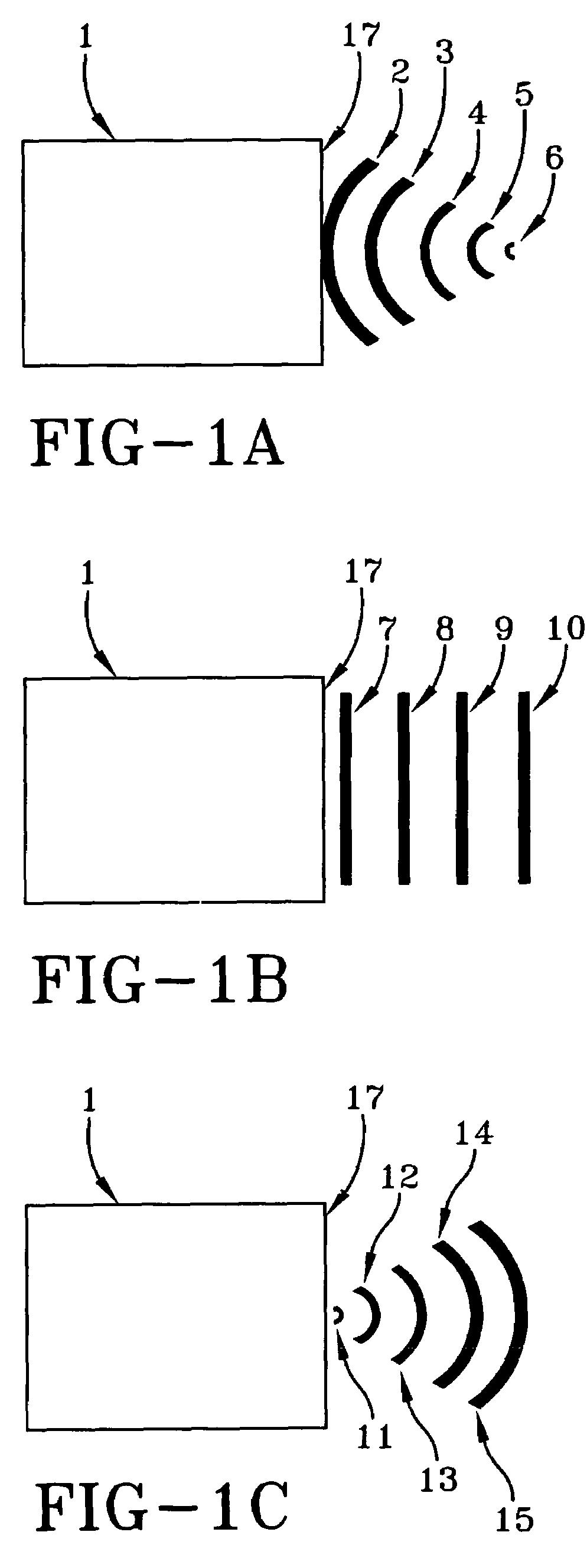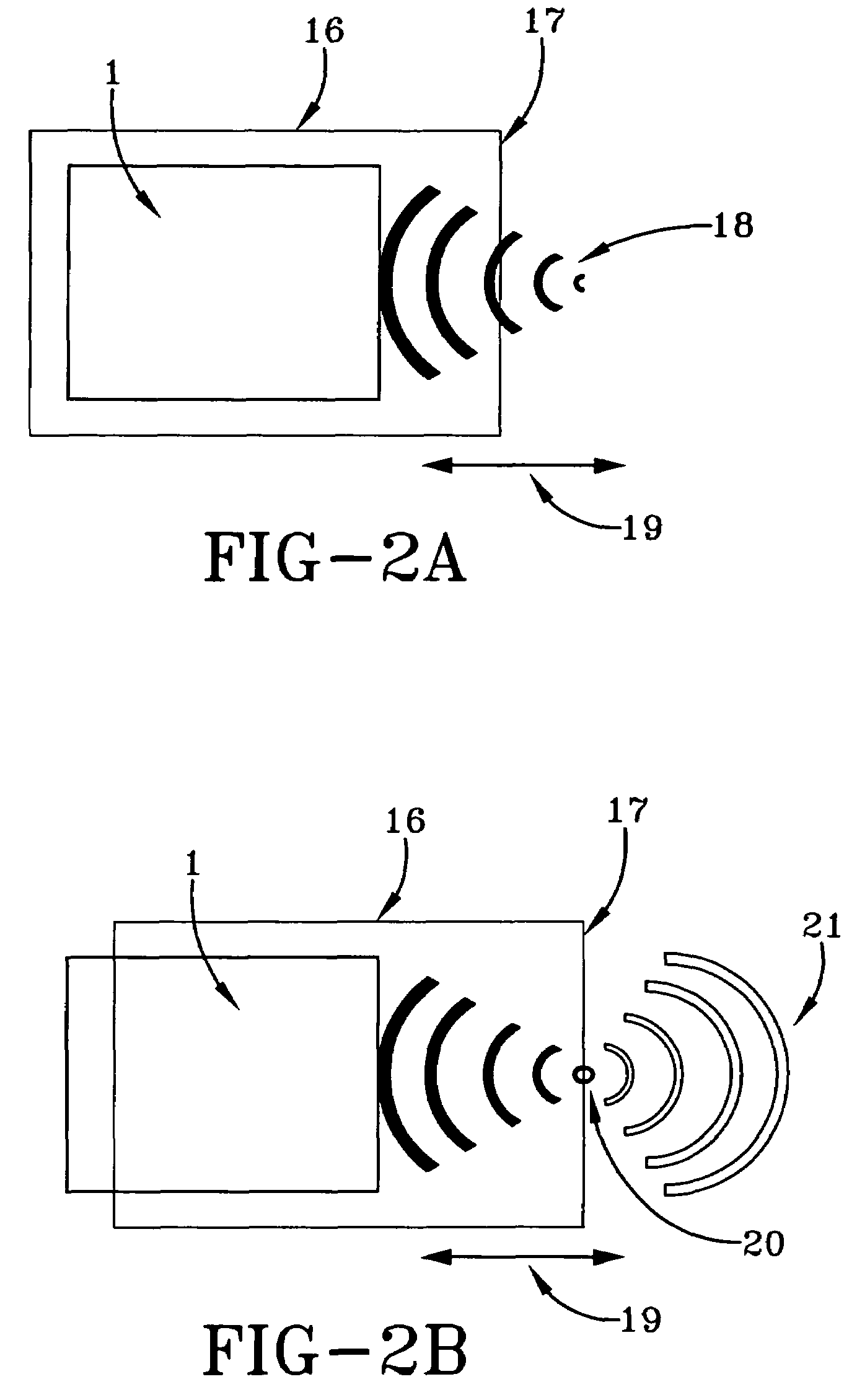Pressure pulse/shock wave therapy methods for organs
a technology of shock wave therapy and pressure pulse, which is applied in the field of treating mammals with acoustic pressure pulse shock wave, can solve the problems of loss of range for directing shock wave, reduced treatment effect, and reduced treatment effect of surrounding and overlying tissue and skeletal structures, so as to reduce the sensitiveness of the target organ, reduce the risk of injury, and improve the effect of wave energy transmission
- Summary
- Abstract
- Description
- Claims
- Application Information
AI Technical Summary
Benefits of technology
Problems solved by technology
Method used
Image
Examples
Embodiment Construction
[0055]In the shock wave method of treating an organ of a mammal be it human or an animal with an at least partially exposed target site on the organ, the organ is positioned in a convenient orientation to permit the source of the emitted waves to most directly send the waves unobstructed to the target site to initiate shock wave stimulation of the target area with minimal, preferably no interfering tissue or bone features in the path of the emitting source or lens. Assuming the target area is within a projected area of the wave transmission, a single transmission dosage of wave energy may be used. The transmission dosage can be from a few seconds to 20 minutes or more dependant on the condition. Preferably the waves are generated from an unfocused or focused source. The unfocused waves can be divergent or near planar and having a low pressure amplitude and density in the range of 0.00001 mJ / mm2 to 1.0 mJ / mm2 or less, most typically below 0.2 mJ / mm2. The focused source preferably can...
PUM
 Login to View More
Login to View More Abstract
Description
Claims
Application Information
 Login to View More
Login to View More - R&D
- Intellectual Property
- Life Sciences
- Materials
- Tech Scout
- Unparalleled Data Quality
- Higher Quality Content
- 60% Fewer Hallucinations
Browse by: Latest US Patents, China's latest patents, Technical Efficacy Thesaurus, Application Domain, Technology Topic, Popular Technical Reports.
© 2025 PatSnap. All rights reserved.Legal|Privacy policy|Modern Slavery Act Transparency Statement|Sitemap|About US| Contact US: help@patsnap.com



